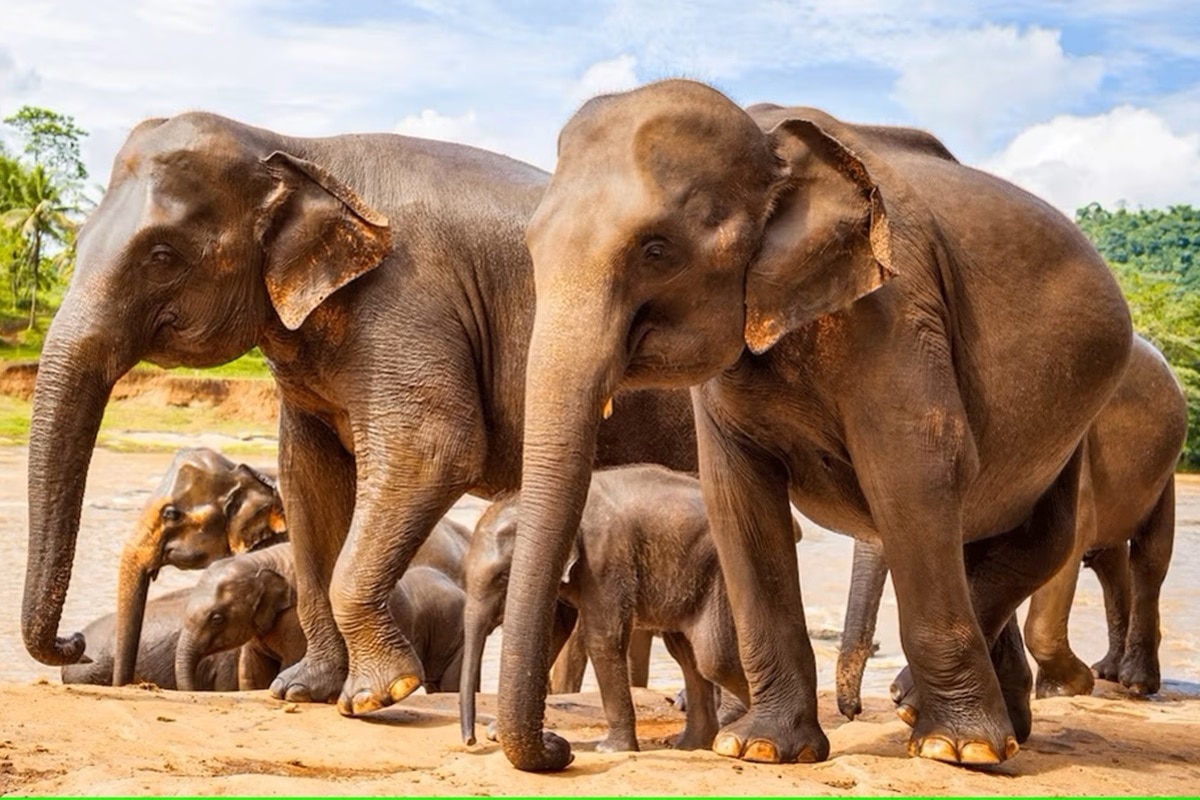Asian elephants show many traits which are thought to be associated with low agonistic competition.
Human Modified Food And Elephants: Elephant herds compete more for food in anthropogenically created grasslands than in forests even if the former has an abundance of food, according to a new study which highlights how human activities can have ecological effects and impact the social lives of animals.
Asian elephants exhibit female-bonded groups (while males are largely solitary) with the most inclusive social unit being the clan—equivalent to a social group, band, troop, clan or community. Females within clans show fission-fusion dynamics, in which clan members are usually distributed across multiple groups (or parties), whose group sizes and compositions can change across hours.
Asian elephants show many traits which are thought to be associated with low agonistic competition. First, their primary food is a low-quality, dispersed resource (grass and vegetative plant parts,) and thus not expected to cause contests. Their fission–fusion dynamics allow them to flexibly split into small groups and mitigate competition. They are not territorial, and their home ranges may overlap extensively, a trait that was expected to relate to infrequent aggression during between-group encounters.
Scientists from Jawaharlal Nehru Centre for Advanced Scientific Research (JNCASR), an autonomous institution under the Department of Science and Technology, Government of India, investigated the influence of food distribution within and between group interactions in female-bonded animals such as elephants.
Dr. Hansraj Gautam and Prof. TNC Vidya tracked data on elephant behaviour from the long-term Kabini Elephant Project set up in 2009 to identify and study individual elephants and explored whether within-clan hostile interactions (agonism) and between-clan agonistic encounters, its rate and distribution in the elephants is dependent on variation in grass abundance, grass dispersion, and group size of the elephants.
They assessed data on elephant behaviour from Kabini Grassland and its neighbouring forest and found that competition between elephant herds is greater in grasslands which have an abundance of food as compared to forests.
The findings of their study partly support the predictions of a socio-ecological model, the ecological model of female social relationships (EMFSR) which states that food distribution primarily determines competition (and physical conflict) between and within groups. Increased conflict is expected overabundant and clumped food resources that can be monopolised by groups or individuals.
The study published in the journal Royal Society Open Science which shows that increasing resource availability can have opposite effects than intended, has a lot of relevance in the context of rapid anthropogenic changes in natural habitats, such as human interference in the social systems of wild populations.

